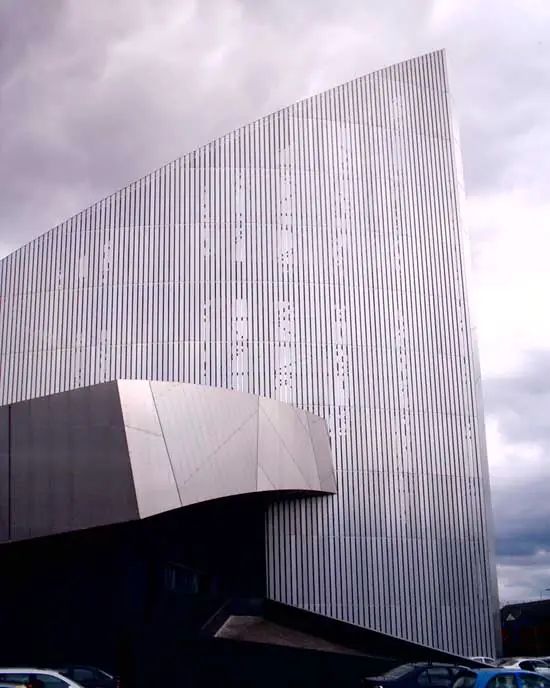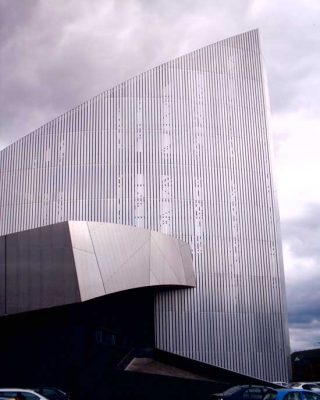Top 10 Most Iconic UK Buildings, Best British Architectural Design, Property
Top 10 Most Iconic Buildings In The UK Guide
British Building Construction: England, Scotland, Wales & Northern Ireland Architecture Article
10 July 2019
The Top 10 Most Iconic Buildings In The United Kingdom
The UK is full of stunning architecture. Whilst a lot of it has some great history behind it, others are modern and skilfully put together. The juxtaposition sometimes shouldn’t work and, yet, somehow it does. Karl McArdle, Director of The Property Buying Company says: “These are some of my favourite buildings in the UK. The stories behind each of them are unique and fascinating. They truly are iconic.”
The Sage, Gateshead
A concert venue and centre for musical education, The Sage is situated on the south bank of the River Tyne in the Northeast. The venue opened in 2004 and was developed by Foster and Partners, costing over £70 million to plan and build.
The curved glass and stainless-steel building contains three performance spaces and has been specifically designed to have amazing acoustics. Although it looks like one building, structurally it is 3 separate ones, each being insulted from the other to prevent noise and vibrations travelling between them. The Sage is open throughout the day, even when there are no events on, and customers can enjoy locally prepared food and drink whilst taking in the stunning views of the Newcastle and Gateshead quaysides.
The Shard, London
Aptly named because it resembles a shard of glass, this iconic building is 95 stories and stands at an impressive 1,016 ft tall, making it the second-tallest free-standing structure in the UK. Renzo Piano, an Italian Architect, designed the skyscraper and said of the project “This is my vision: I foresee the tower as a vertical city, for thousands of people to work and enjoy, and for millions to take to their heart.”
The engineering of the building was pioneering in that it incorporated a top-down construction which was a first in the UK. This means that the foundations were dug whilst the core was built up. Completed and officially opened in 2012 by the Prime Minister of Qatar, The Shard plays host to restaurants, hotels, offices and a viewing gallery that is open to the public.
Imperial War Museum, Manchester
This is the first UK building designed by internationally acclaimed architect, Daniel Libeskind, who is best known for his work on the Jewish Museum in Berlin and the Ground Zero site in New York. Set just across the footbridge from the Lowry, this iconic building is carefully located due to the wartime history of the area, where factories stood during the First and Second World Wars creating munitions, tanks and engines for the war effort.
The structure of the Imperial War Museum Manchester itself is meant to represent a shattered globe which exemplifies the effect war has on buildings. The three sections of the globe represent EarthShard, WaterShard and AirShard, three main conflicts on land, at sea and in the air.
The Royal Liver Building, Liverpool
Dating back to 1850, though officially completed in 1911, this Grade-I-listed building is a registered UNESCO World Heritage Site. The building was originally home to the Royal Liver Assurance Group which provided locals with financial assistance if they lost a wage-earning relative back in the mid to late 1800s.
Named as one of Liverpool’s ‘Three Graces’ because of its location next to the Cunard Building and Port of Liverpool Building, lining the city’s waterfront, The Liver Building was one of the first in the world to be built using reinforced concrete. It is one of the most recognisable landmarks in Liverpool due to its two Liver Birds that watch over the city and sea. Legend states that if these birds were to ever fly away then the city wouldn’t continue to exist.
M by Montcalm, London
Based in Islington, East London, this eye-catching hotel was designed by London-based architects Squire and Partners to be an optical illusion. The building is shaped like an elongated diamond, with a point that juts out onto City Road, giving the illusion that the building is much narrower than it is. Visitors are wowed by how spacious the interior is, with 269 rooms, a spa, gym and Michelin-starred restaurant. Also referred to as ‘Shoreditch Tech City’, the hotel was opened in May 2015 and boasts mesmerising views as well as intelligent technology, such as LCD TV and electronic curtains.
The Royal Pavilion, Brighton
Formerly a royal seaside retreat of King George IV, this Grade-I-listed building was fashioned in the Indo-Saracenic style which was used by British architects in India in the late 19th-Century. The building started in 1787 and the domes were later added in 1815 by architect John Nash. Queen Victoria was said not to be a fan of the building or of Brighton and sold it to the town in 1850 for £53,000. The Pavilion Garden, surrounding the main building, is the only fully restored Regency garden in the UK and is maintained using purely organic methods. It is now a licensed wedding venue.
The Dunmore Pineapple, Stirlingshire
This folly is considered the ‘most bizarre building in Scotland’ and is based in Dunmore Park in Stirlingshire. The stone pineapple situated between two bothies, is around 14 metres high and is remarkably accurate, with each curving stone leaf draining separately to prevent frost damage or water build-up. Pineapples were used as a decorative motif in architecture to represent power, wealth and hospitality, after they were first discovered and brought to Europe by Christopher Colombus in the late 1400s. A hothouse was built in Dunmore Park in 1761 which was used to grow pineapples, considered a rare delicacy at the time.
Conwy Castle, Wales
This stunning medieval structure dates back to the 13th-century and is situated on the north coast of Wales. Classed as a World Heritage site by UNESCO, Conwy Castle is considered to be one of the finest examples of the late 13th and early 14th-century military architecture in Europe. It is built from imported stone and occupies a coastal ridge that overlooks an important crossing point over the River Conwy. It also has the best preserved suite of private royal chambers in the whole of England and Wales, dating back to the Medieval period.
Beetham Tower, Manchester
This 47-storey skyscraper is the second tallest outside of London and is visible from ten English counties. The eye-catching building has received a number of awards for its innovative design, which is the brain-child of Ian Simpson of the Beetham Organisation. It incorporates an elongated floor plan with a height to width ratio of 10:1, making it one of the thinnest skyscrapers in the world. The south side of the building has a blade structure which accentuates the slim design and creates a whistling noise during windy days, that can allegedly be heard across the city. Home to the Hilton Hotel, the 23rd floor Sky Bar offers the best views in Manchester.
The Clyde Auditorium, Glasgow
Also referred to as ‘The Armadillo’ due to its interlocking design, this venue holds events such as conventions, concerts and auditions. A lot of comparisons to the Sydney Opera House have been drawn, although architects Foster and Partners, stated that this was not their inspiration. They said that it was meant to look like an interlocking series of ship’s hulls, which pays homage to the Clyde’s shipbuilding heritage.
The Corn Exchange, Leeds
Designed by Cuthbert Broderick, an architect from Hull, this Victorian building was completed in 1864 in Leeds city centre. The design was based on the architecture of the Bourse de commerce in Paris, which was a trading place for grain and other commodities and features a large dome. The Corn Exchange is just one of three in the whole country and, since 1985, has been used as a shopping centre for speciality shops, as well as art and vintage fairs.
Building Articles
Comments / photos for the Top 10 Most Iconic Buildings In The UK page welcome


